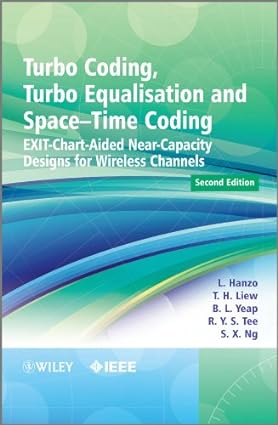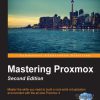Turbo Coding Turbo Equalisation and Space Time Coding EXIT Chart Aided Near Capacity Designs for Wireless Channels 2nd Edition by Hanzo, Liew, Yeap, Tee 9780470978481 0470978481
$50.00 Original price was: $50.00.$35.00Current price is: $35.00.
Turbo Coding Turbo Equalisation and Space Time Coding EXIT Chart Aided Near Capacity Designs for Wireless Channels 2nd Edition by Hanzo, Liew, Yeap, Tee – Ebook PDF Instant Download/Delivery: 9780470978481, 0470978481
Full download Turbo Coding Turbo Equalisation and Space Time Coding EXIT Chart Aided Near Capacity Designs for Wireless Channels 2nd Edition after payment

Product details:
ISBN 10: 0470978481
ISBN 13: 9780470978481
Author: L. Hanzo, T. H. Liew, B. L. Yeap, R. Y. S. Tee, S. X. Ng
Covering the full range of channel codes from the most conventional through to the most advanced, the second edition of Turbo Coding, Turbo Equalisation and Space-Time Coding is a self-contained reference on channel coding for wireless channels. The book commences with a historical perspective on the topic, which leads to two basic component codes, convolutional and block codes. It then moves on to turbo codes which exploit iterative decoding by using algorithms, such as the Maximum-A-Posteriori (MAP), Log-MAP and Soft Output Viterbi Algorithm (SOVA), comparing their performance. It also compares Trellis Coded Modulation (TCM), Turbo Trellis Coded Modulation (TTCM), Bit-Interleaved Coded Modulation (BICM) and Iterative BICM (BICM-ID) under various channel conditions.
The horizon of the content is then extended to incorporate topics which have found their way into diverse standard systems. These include space-time block and trellis codes, as well as other Multiple-Input Multiple-Output (MIMO) schemes and near-instantaneously Adaptive Quadrature Amplitude Modulation (AQAM). The book also elaborates on turbo equalisation by providing a detailed portrayal of recent advances in partial response modulation schemes using diverse channel codes.
A radically new aspect for this second edition is the discussion of multi-level coding and sphere-packing schemes, Extrinsic Information Transfer (EXIT) charts, as well as an introduction to the family of Generalized Low Density Parity Check codes.
This new edition includes recent advances in near-capacity turbo-transceivers as well as new sections on multi-level coding schemes and of Generalized Low Density Parity Check codes
- Comparatively studies diverse channel coded and turbo detected systems to give all-inclusive information for researchers, engineers and students
- Details EXIT-chart based irregular transceiver designs
- Uses rich performance comparisons as well as diverse near-capacity design examples
Table of contents:
1.Historical Perspective, Motivation and Outline
2.Convolutional Channel Coding
3.Soft Decoding and Performance of BCH Codes
Part I: Turbo Convolutional and Turbo Block Coding
4. Turbo Convolutional Coding
5. Turbo BCH Coding
Part II: Space–time Block and Space–time Trellis Coding
6. Space–time Block Codes
7. Space–time Trellis Codes
8. Turbo-coded Adaptive Modulation versus Space–time Trellis Codes for Transmission over Dispersive Channels
Part III: Turbo Equalisation
9. Turbo-coded Partial-response Modulation
10. Turbo Equalisation for Partial-response Systems
11. Comparative Study of Turbo Equalisers
12. Reduced-complexity Turbo Equaliser
13. Turbo Equalisation for Space–time Trellis-coded Systems
Part IV: Coded and Space–time-Coded Adaptive Modulation TCM, TTCM, BICM, BICM-ID and MLC
14. Coded Modulation Theory and Performance
15. Multilevel Coding Theory
16. MLC Design Using EXIT Analysis
17. Sphere Packing-aided Space–time MLC/BICM Design
18. MLC/BICM Schemes for the Wireless Internet
19. Near-capacity Irregular BICM-ID Design
20. Summary and Conclusions
People also search:
turbo coding and interleaving
what is a turbo code
turbo codes explained
turbo codes tutorial
programming in turbo c
Tags: Hanzo, Liew, Yeap, Turbo, Equalisation



